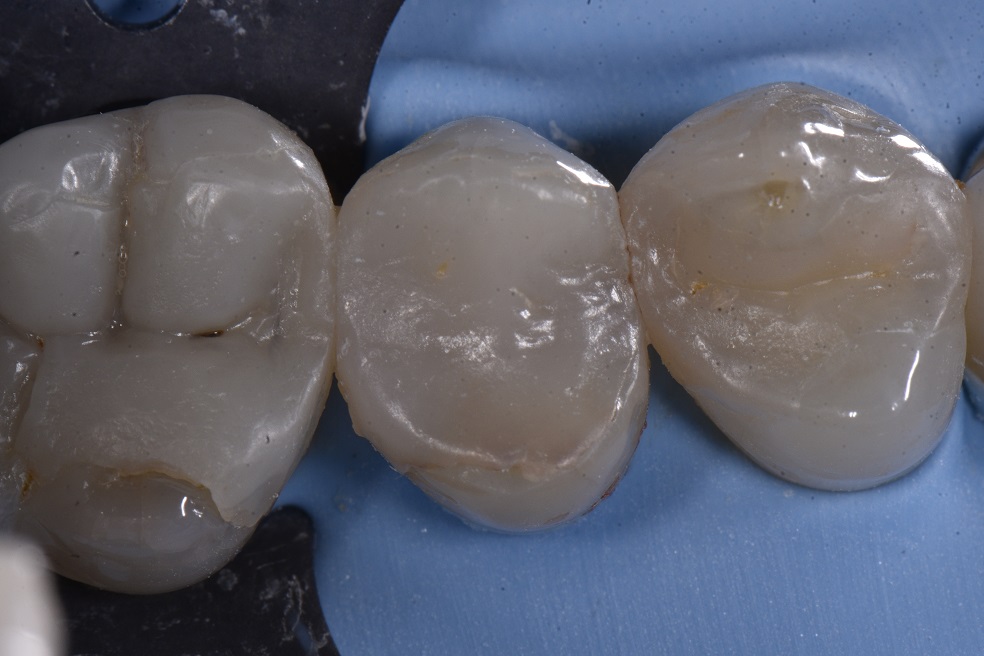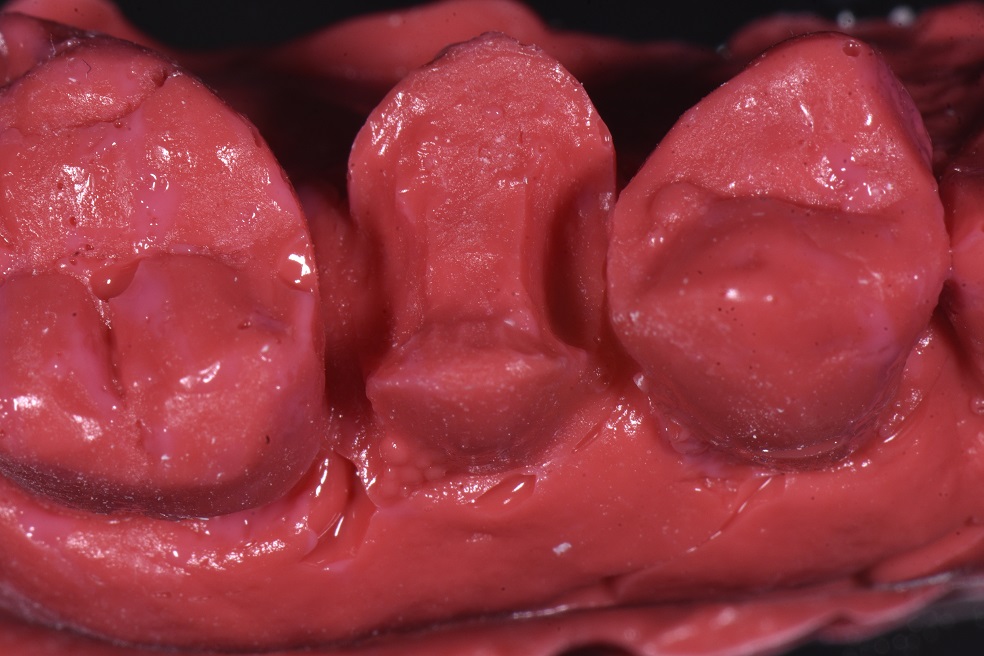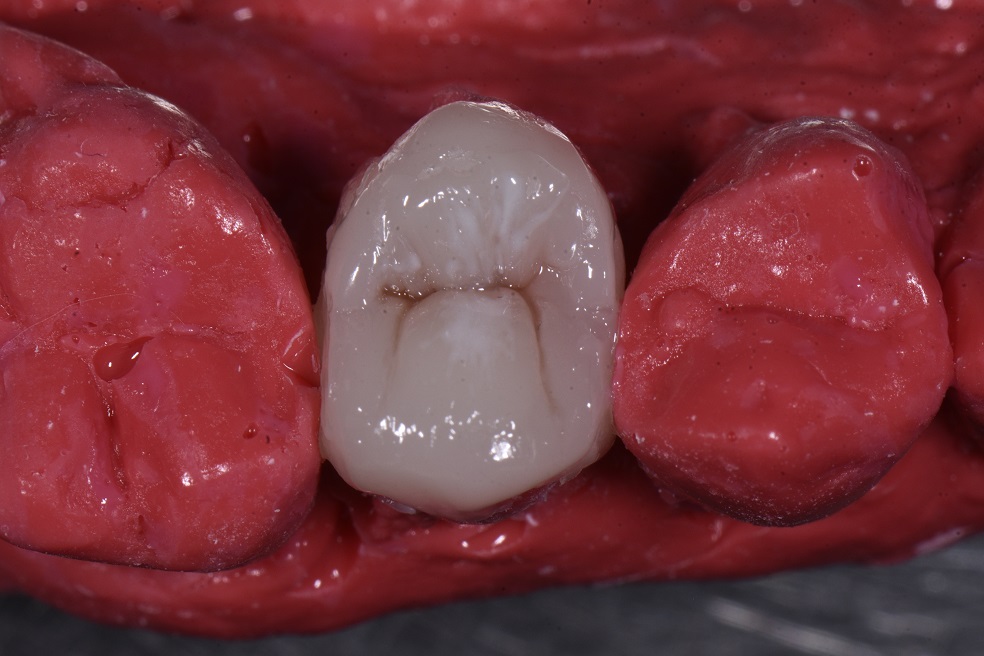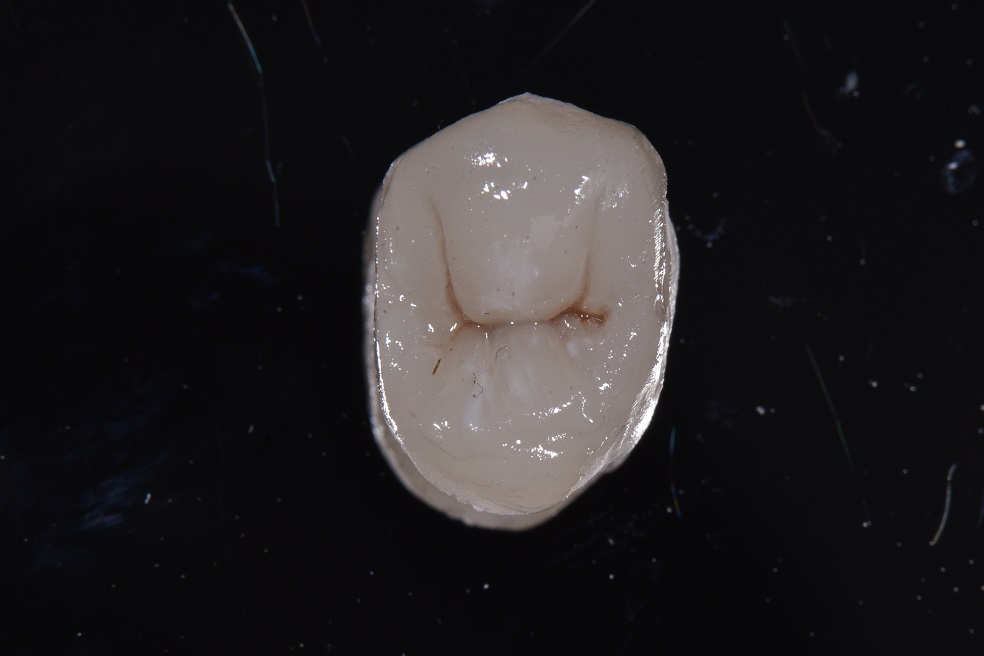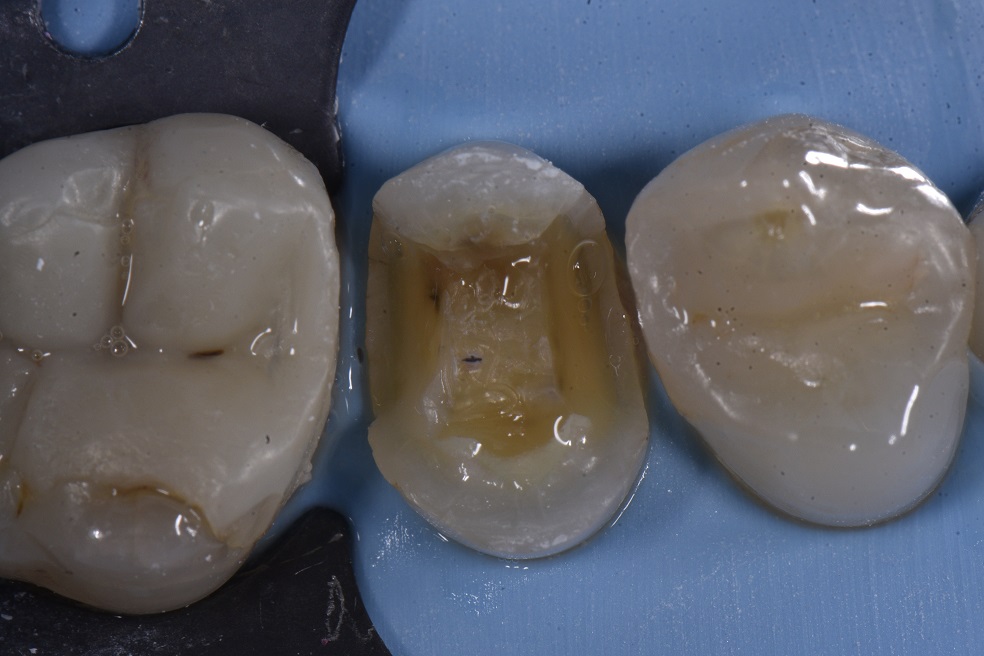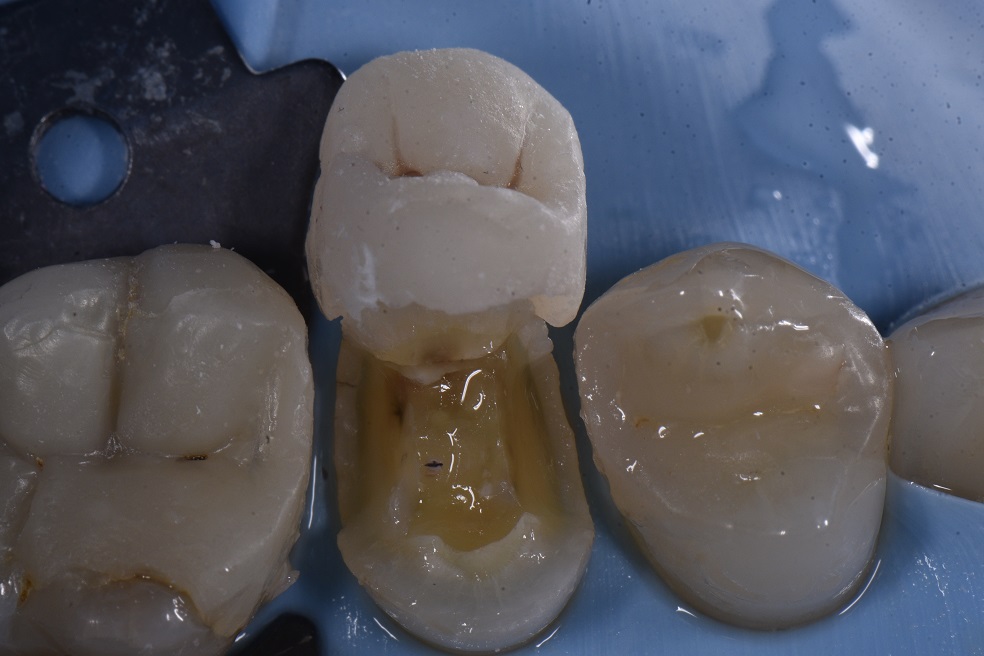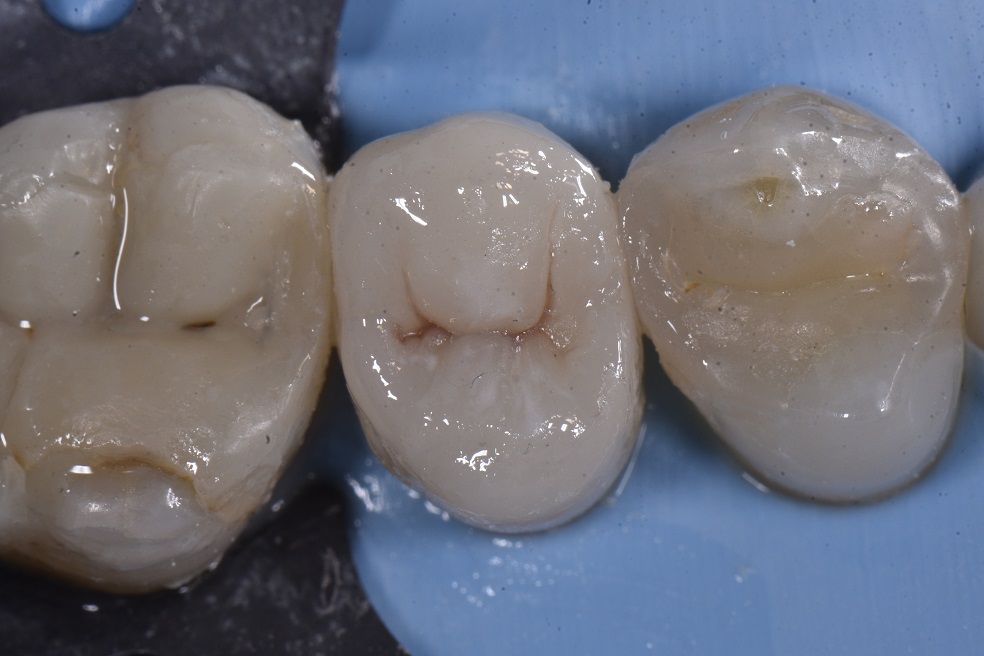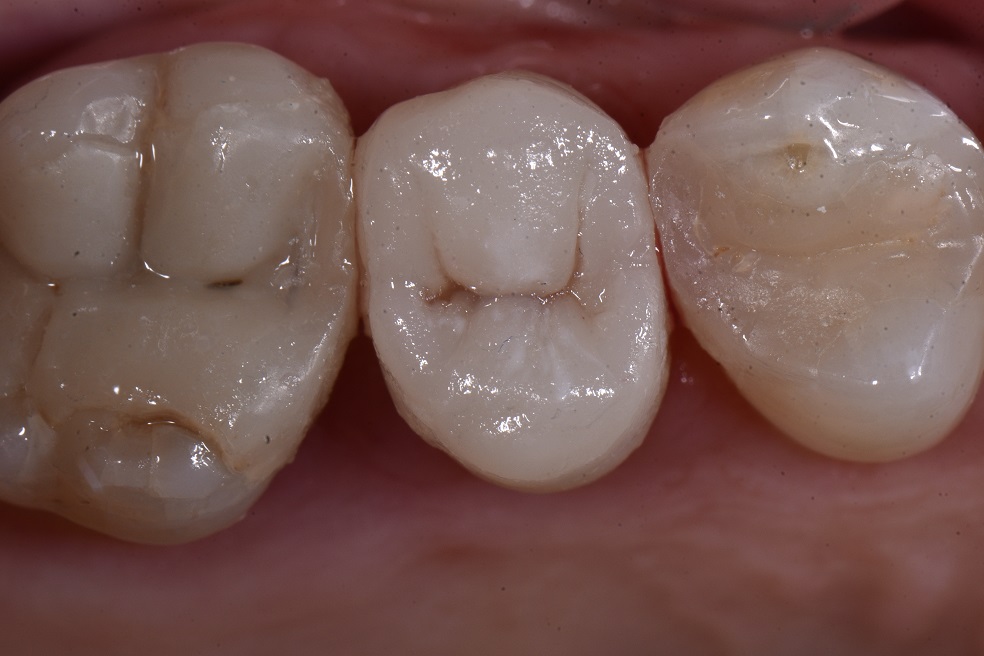This patient had a structurally compromised 25 with a large MODB leaving the P cusp susceptible to fracture. Despite wanting to reinforce the tooth structure, the patient had a limited budget and requested an alternative to a bonded lithium disilicate restoration.
Intraoperatively, facioaxialpulpal and linguoaxialpulpal line angles showed signs of incomplete fracture (there were no symptoms with the tooth) and we dissected this as far as we dared to. There was no visible connection to the external surface. The decision was made to adhesively bond a semi-direct composite overlay MODBL fabricated extraorally on Voco’s Die Silicone (Red) after taking an alginate impression of the preparation. This is a great technique, for there are a few benefits: 1) The patient gets to have a break from having their mouth open, 2) The restoration can be fabricated extremely efficiently on this model – it took 10 minutes from whoa to go. You can cure from every which angle and do “speed increments”. The restoration was characterized using Voco’s Final Touch Brown and White. After you remove the restoration from the elastomeric die, you can hit it again on the intaglio with a light. The surface is micro air abraded before decontamination with 33% H3PO4 (aq) and the surface silanated as you would any other glass-containing indirect restoration. The composite onlay was bonded in place using GC G-Premio Bond + Dark Cure Activator as the bond and G-Cem Linkforce A2 as the cement.
Have a great night,
Clarrie x
#Voco #DieSilicone #SemiDirect #CompositeCrown #GrandioSO #FinalTouch #RestorativeAlternatives #SkulptingSkool104
